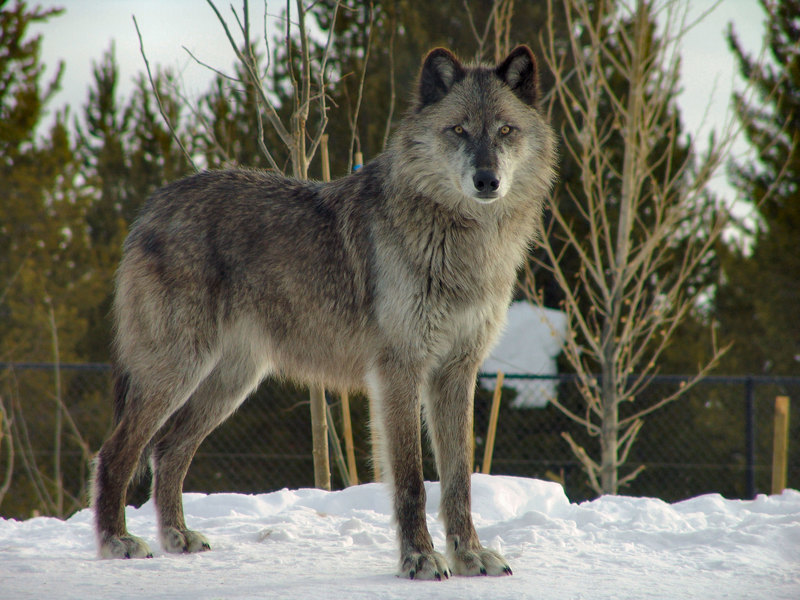The Wolves of Yellowstone Park:
 Before the 1900s, grey wolves used to roam freely around the Yellowstone area of the US. By the 1920s, there were none left, due to hunting by humans.
Before the 1900s, grey wolves used to roam freely around the Yellowstone area of the US. By the 1920s, there were none left, due to hunting by humans.
In 1995, ecologists were keen to see what the effect would be of reintroducing grey wolves back into a habitat that had once been theirs. One of the reasons for this decision was that in the seventy years since the wolves had gone, elk were starting to overgraze the park. Elk had been one of the main prey animals for the grey wolf, but with no wolves to keep their numbers down, the elk were eating more and more of the trees, shrubs and plants in the park.
The elk in the park were living long lives and only tending to die of old age or illness in a long, cold winter. When the wolves came back and started hunting elk, they weren’t the only ones who got fed. Many scavengers were also able to feed on the remains of the elk carcasses that the wolves didn’t eat. Grizzly bears, coyotes, eagles and ravens all benefitted. The populations of these scavenger species all increased.
Biologists had also been studying the trees in Yellowstone National Park and were confused about why the Aspen trees were declining. By looking closely at aerial photographs and by investigating tree rings, the scientists were able to discover that the Aspen had started to decline since the 1920s… the same time that wolves had disappeared from the park.
With the wolves gone, the elk had been able to remain in one place for a long period, eating all the young aspen saplings. The same was happening to willows and to shrubs that produced berries. As a result, those creatures that depended on these trees and berries were also disappearing.
When the wolves were reintroduced, the elk were forced to roam more widely and the trees had a chance to recover. As the trees began to recover, this in turn had an effect on other species. Beavers depend on willow as a food source during the winter. With increasing numbers of willow trees surviving in the park, the Beaver population was able to grow. In 1995, there was only one remaining beaver colony in Yellowstone National Park, but now there are nine. Beavers are another species whose behaviours bring enormous benefits to their ecosystem, via the building of dams.
The whole ecosystem of the park began to regenerate, simply by re-introducing grey wolves!
Photo: Dennis Matheson
Read More: Red Kites Brought Back From the Brink of Extinction in the UK: